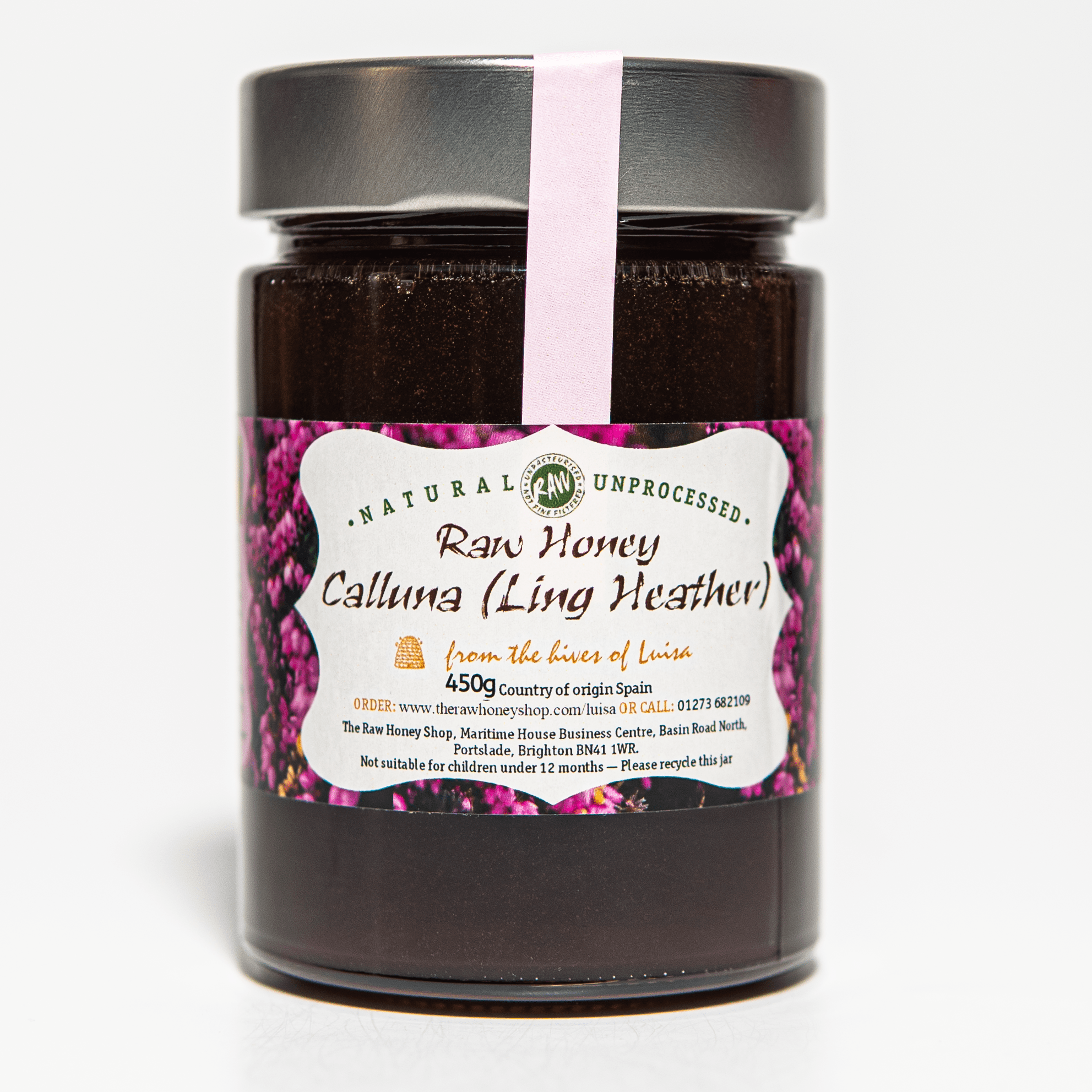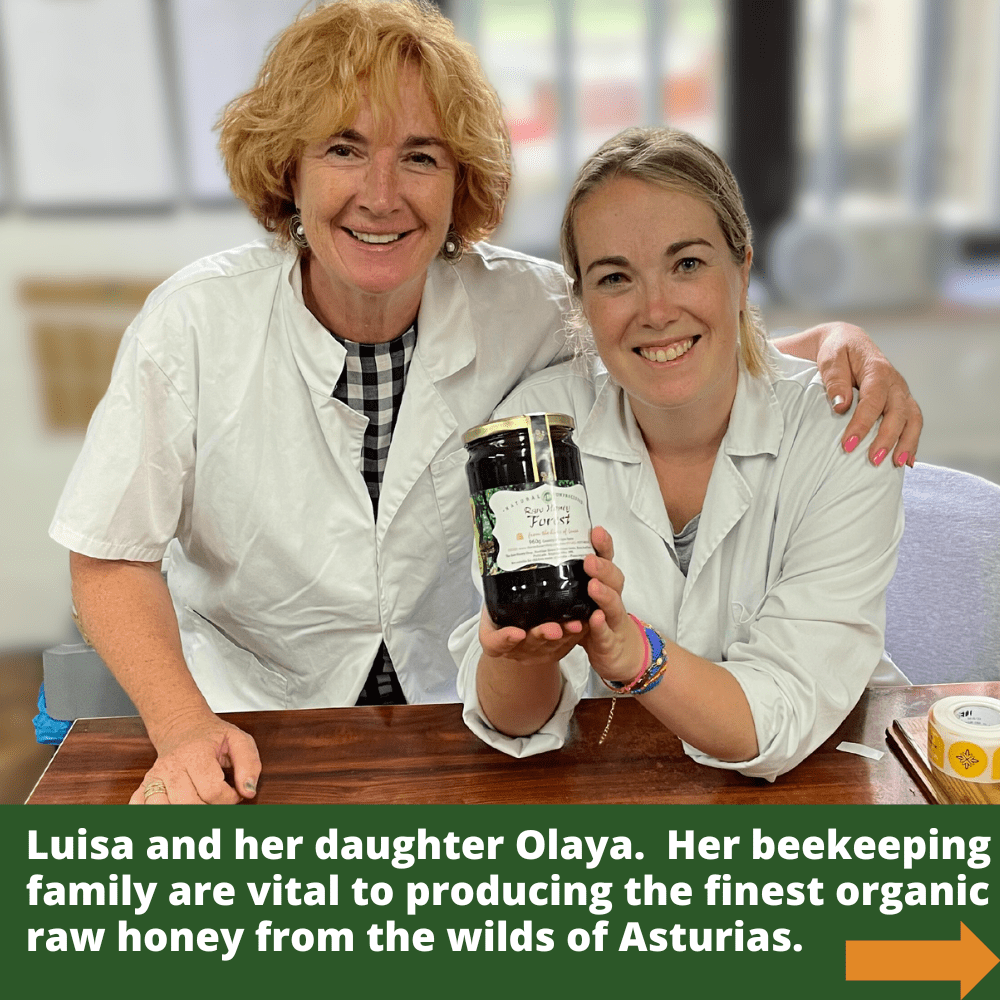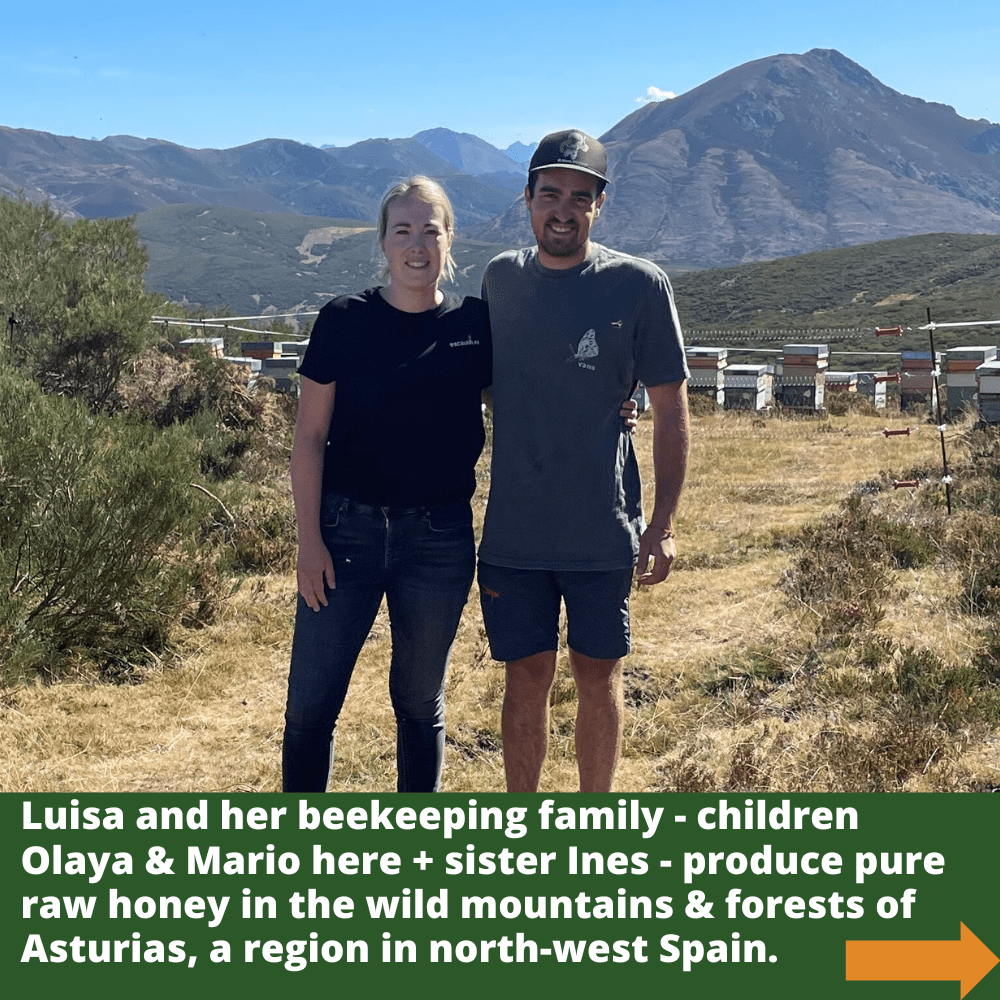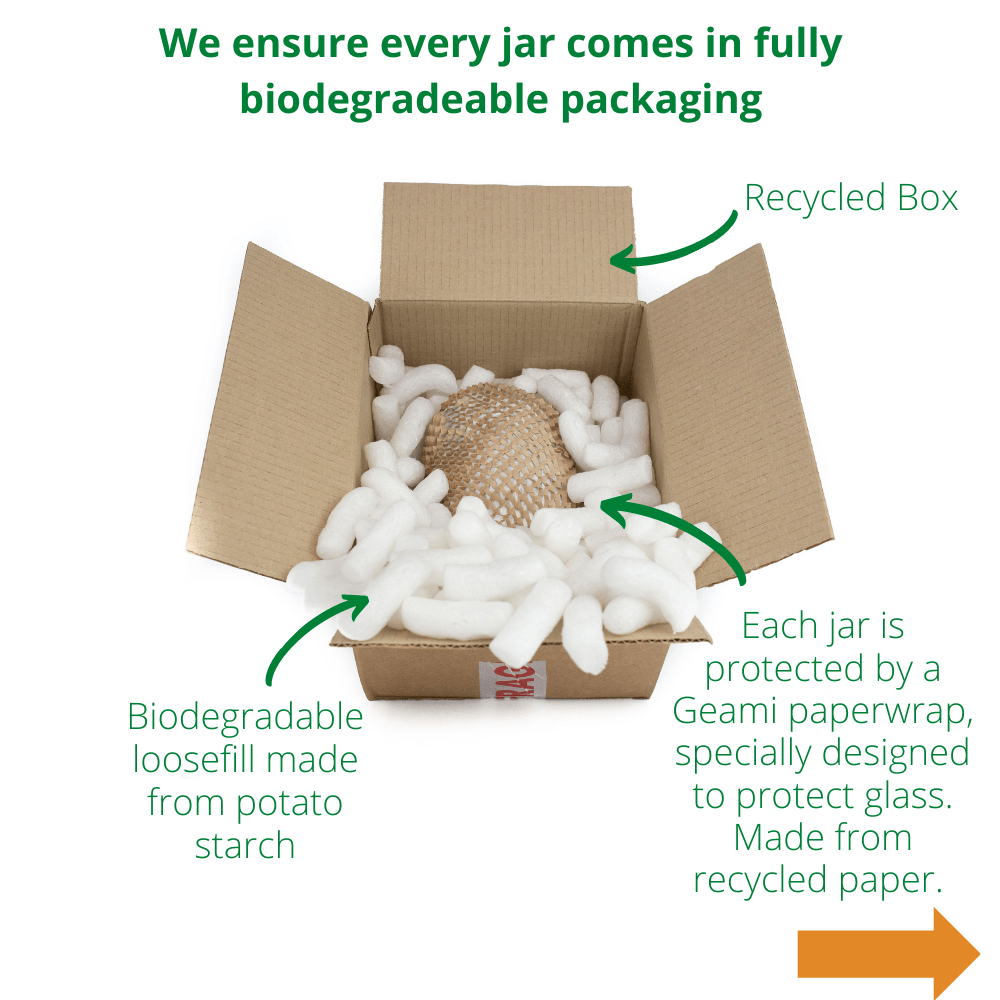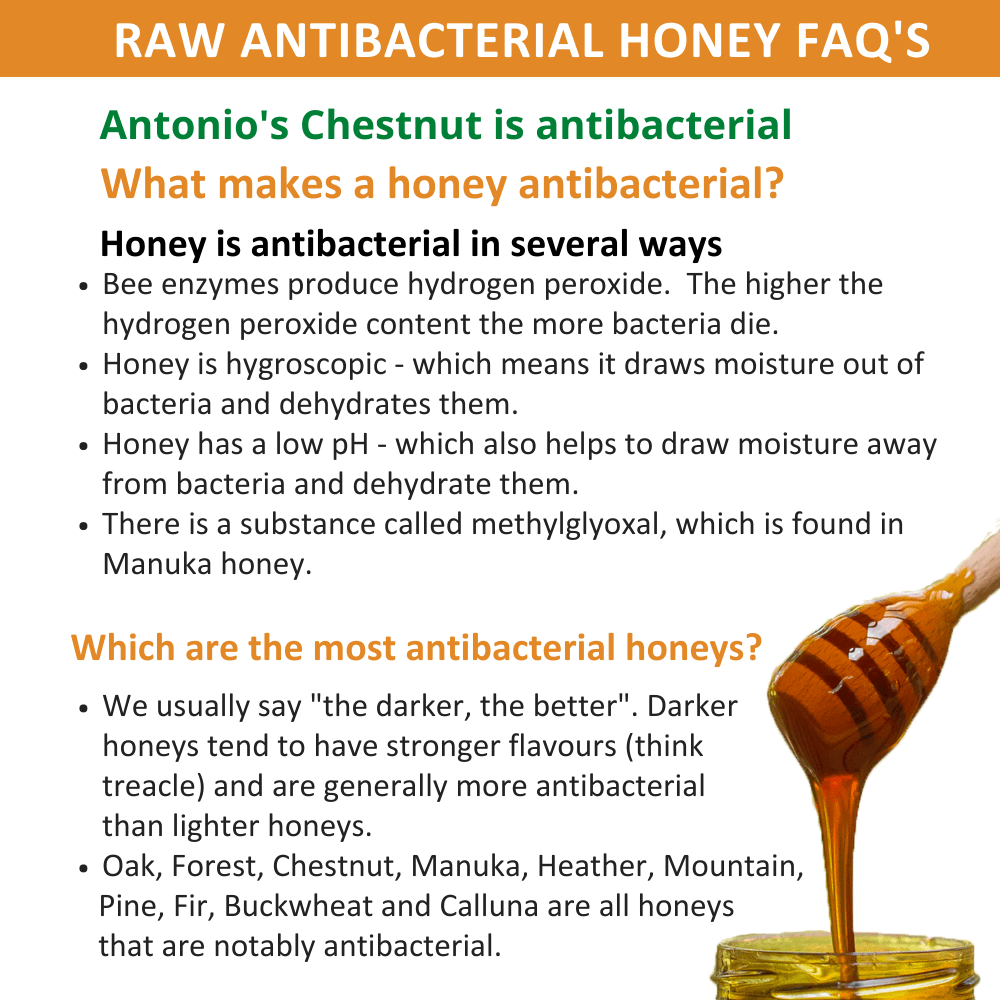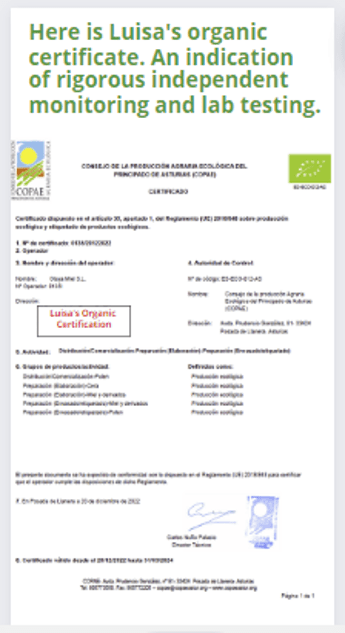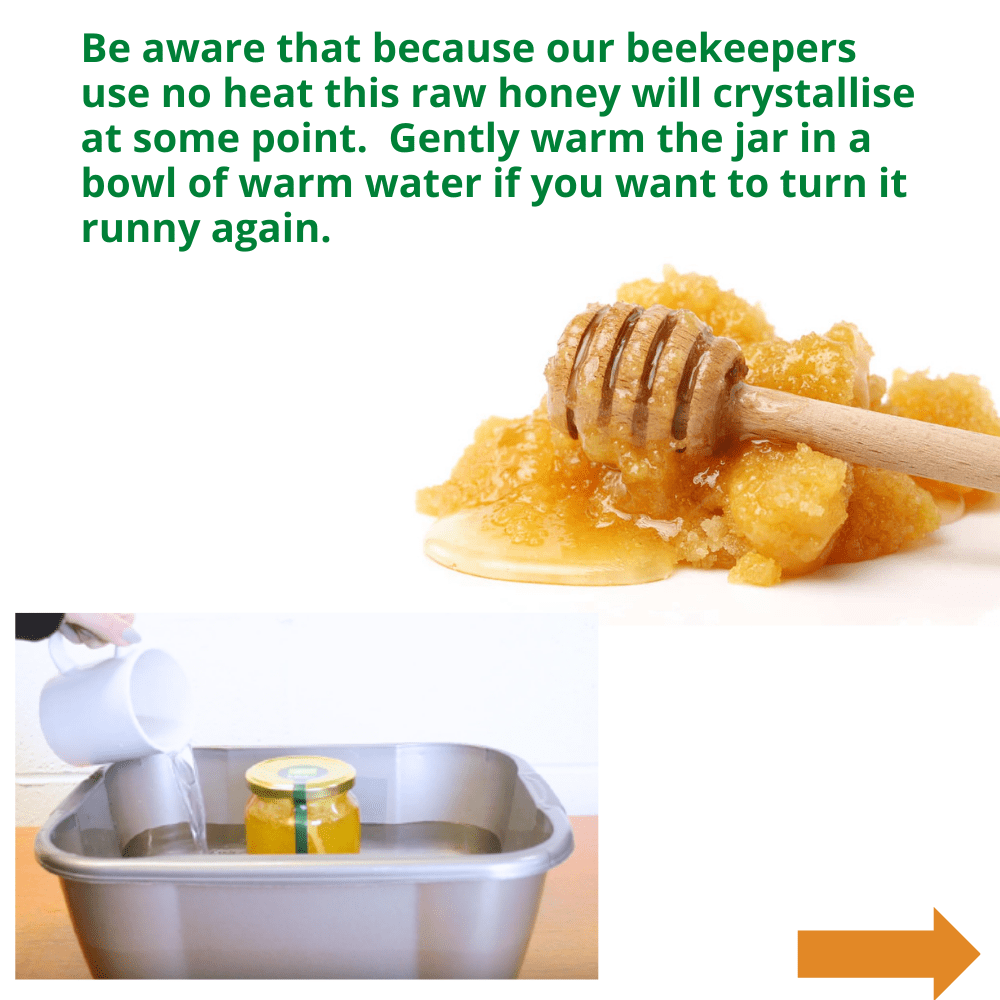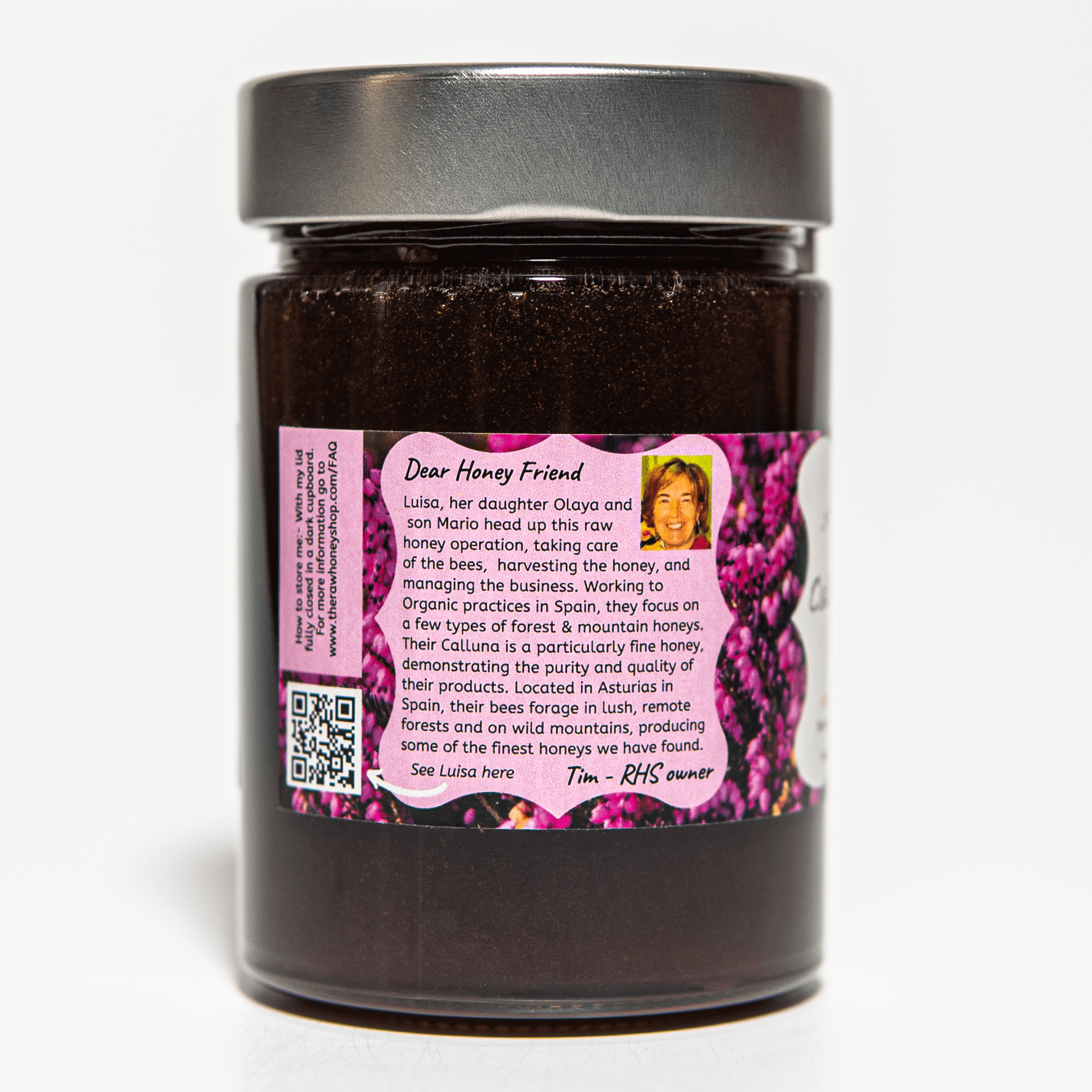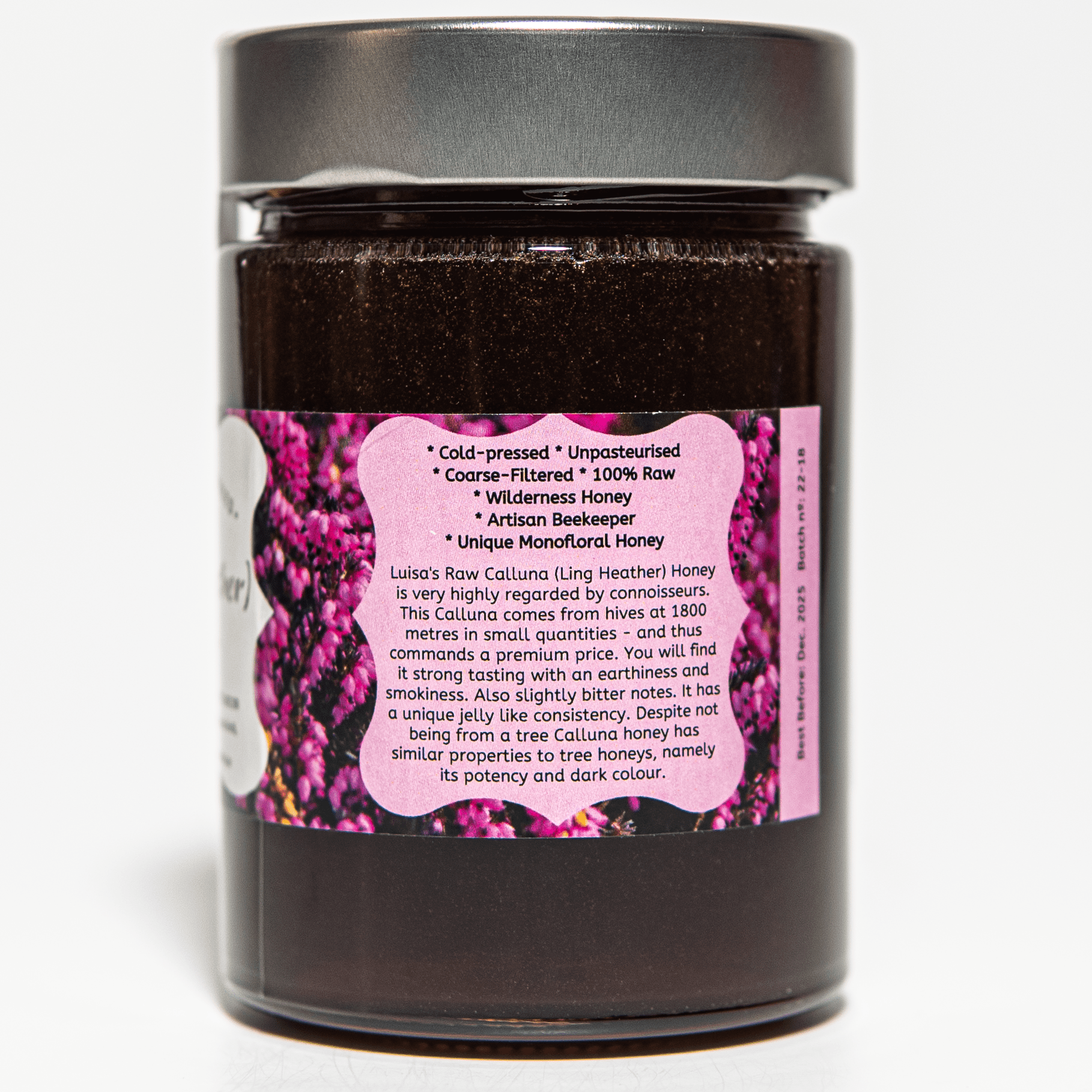Raw Calluna (Ling Heather) Honey - 450g
- Regular price
- GBP 14.59
- Sale price
- GBP 14.59
- Regular price
-
GBP
- Raw, natural and one of the purest kinds of honey because of the remote mountain area it comes from.
- Antibacterial, coarse-filtered, unpasteurised, and enzyme-rich.
- This raw Calluna honey comes from 1500 metres at San Isidro in Asturias, a green and very unspoilt area in the north of Spain.
Luisa's Raw Calluna Honey has a strong aroma of flowers (honeysuckle and lilac come to mind), beeswax, and dry woodiness from the moment the jar is opened. This is an amazing tasting shrub honey, with a very potent flavour. While the texture and sweetness makes one think of fruit jam and very ripe grapes, there is a definite woody earthiness and an acidity, which prevent the honey from coming off as too sweet. In the aftertaste, there are elements of bitter and sour, though neither lingers overly long.
What about the plant the honey comes from? Calluna vulgaris (often known as Ling heather) is the sole species in the genus Calluna in the family Ericaceae. This shrub is a small mountain-hugging evergreens.
Common Uses: Calluna is particularly good to use for treatments on wounds, skin infections and fungal infections due to its great antibacterial properties. In fact, bandages, soaked in Calluna is now used as wound dressings in some French hospitals.
Calluna Honey Facts: Calluna honey is the only honey in Europe with a jelly like consistency.
Please know that raw honey does crystalise and this is a natural process that occurs mainly due to the natural glucose in raw honey. For more information on why honey sets visit this article and for a more scientific explanation go to wikipedia.
About Us - Here at The Raw Honey Shop we take honey very seriously and we believe honey should be RAW, unpasteurised and 100% natural. Since 2008 we've been introducing our customers to a whole new world of pure all natural unpasteurised raw honey. With a product catalogue consisting of over 30 different raw and organic honeys we have a variety to suit all tastes.
Thank you for visiting our shop and we look forward to introducing you to a world of raw, pure and truly wonderful natural honey, the way the bees would want it!
*Product photo is representative of this product. Honey colour and texture may vary depending on the season and level of crystalization. Please check the product title and description for accurate contents.*

































